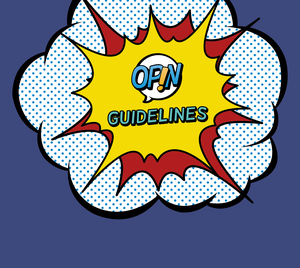Outcome phase
You are almost at the finishing line. Nevertheless, there is still work involved in preparing and transforming the project results into an accessible output – which should then be communicated to the decision-makers and beyond. And don’t forget the evaluation!
Communicate the results in an easily accessible, transparent and appealing way
No matter the form, it is very important that the results are presented in a transparent way that also appeals to the recipients. As there are several recipients of the results, targeted efforts are also highly relevant here. You can ask the different groups of recipients how they would prefer to receive the results. The decision-makers might want it one way, the media a second, and young people a third.
Besides presenting the actual results in the form of ideas, recommendations or others, it is also important that you clarify the significance and relevance of your project results. You should make it clear to everyone that there is real quality output to be gained from involving young people in decision-making processes. To put it another way, you should use your results to show how well youth participation works.
OPIN offers a dedicated “results section”, where you can publish the outcome of the participation phase. Don’t forget to fill it in for those who (re-)visit your project even after its ending.
Listen to our podcast: Perspectives of Decision Makers.
Welcome to the DiGY podcast series. In this episode, we talk about “The other side of the Table: Perspectives of Decision Makers”. Our guest today is Jason Zammit, Senior Manager for Research, Strategy and Youth Policy Implementation at Agenzija Zghazagh - The National Youth Agency of Malta.
5 helpful tips you should keep in mind during your outcome phase
- Present your results to decision-makers face-to-face
You should be well-prepared for these meetings. Decision-makers might ask critical questions like the number of participants, representativeness, the legitimacy of the results, the neutrality of the information material, and so on. More here - Communicate your results beyond the decision-making level
Follow-up with the young participants is essential. Firstly, you should send the results to them. Secondly, you should keep them updated on the initiatives that are being realized to make their input count, and what impact it has made so far. - Evaluate your project activities
Gather your team members for an internal evaluation of your project activities. Reflect, in how far you realized the goals you set in the Idea phase. Prepare some evaluation questions and invite young participants to answer them. You will learn what went well, and what you could do differently the next time. - Showcase the impact of your project
Success is measured by the impact you make. An impact assessment is your chance to showcase the impact that the project has had on many different levels. Examine the impact on your target group (young people), on the decision-making level, on your locality/region, your organization and staff. If the project receives positive evaluation, decision-makers will be open for a new eParticipation project in the future. More here - Initiate your next youth eParticipation project
In general, citizens – young and old alike – are very politically engaged after having taken part in participatory processes. Therefore, our advice to you is to initiate your next project as soon as possible, so you can sustain this energy. It is this kind of energy that contributes to keeping our democracy alive!
All texts and resources on this website have been funded by the European Commission as part of the Erasmus+ project DIGY and are published under the following licence:




